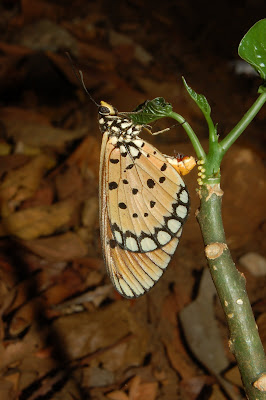
World Environment Day (WED) was established by the United Nations General Assembly in 1972. WED is hosted every year by a different city and commemorated with an international exposition through the week of June 5. The United Nations Environment Programme (UNEP), also created in 1972, uses WED to stimulate awareness of the environment and enhance political attention and public action.
"Stockholm was without doubt the landmark event in the growth of international environmentalism," writes John McCormick in the book Reclaiming Paradise. "It was the first occasion on which the political, social and economic problems of the global environment were discussed at an intergovernmental forum with a view to actually taking corrective action."
WED 2008
The host for World Environment Day 2008 will be New Zealand, with the main international celebrations scheduled for Wellington. The slogan for 2008 is "CO2, Kick the Habit! Towards a Low Carbon Economy." New Zealand was one of the first countries to pledge to achieve carbon neutrality, and will also focus on forest management as a tool for reducing greenhouse gases.[2] The Chicago Botanic Garden will serve as the North American host[3]for World Environment Day on June 5, 2008. The daylong celebration will feature activities for everyone in the family along with presentations by local and national organizations in the areas of food, shelter, energy, education, transportation, and public awareness.
A website has been set-up by the ministry of education nz to support in-school initiatives. efs.tki.org.nz. It encourages school pupils to make short term and longer term pledges to minimize emissions. The list of pledges can be found on a typical school profile's page

Previous host cities
World Environment Day celebrations have been hosted in the following cities:[4]
2007 - Tromsø, Norway
2006 - Algiers, Algeria
2005 - San Francisco, U.S.
2004 - Barcelona, Spain
2003 - Beirut, Lebanon
2002 - Shenzhen, People's Republic of China
2001 - Torino, Italy and Havana, Cuba
2000 - Adelaide, Australia
1999 - Tokyo, Japan
1998 - Moscow, Russian Federation
1997 - Seoul, Republic of Korea
1996 - Istanbul, Turkey
1995 - Pretoria, South Africa
1994 - London, United Kingdom
1993 - Beijing, People's Republic of China
1992 - Rio de Janeiro, Brazil
1991 - Stockolm, Sweden
1990 - Mexico City, Mexico
1989 - Brussels, Belgium
1988 - Bangkok, Thailand
1987 - Nairobi, Kenya
Previous themes
2008 - Kick The Habit - Towards A Low Carbon Economy
2007 - Melting Ice – a Hot Topic?
2006 - Deserts and Desertification - Don't Desert Drylands!
2005 - Green Cities – Plan for the Planet!
2004 - Wanted! Seas and Oceans – Dead or Alive?
2003 - Water – Two Billion People are Dying for It!
2002 - Give Earth a Chance
2001 - Connect with the World Wide Web of Life
2000 - The Environment Millennium - Time to Act
1999 - Our Earth - Our Future - Just Save It!
1998 - For Life on Earth - Save Our Seas
1997 - For Life on Earth
1996 - Our Earth, Our Habitat, Our Home
1995 - We the Peoples: United for the Global Environment
1994 - One Earth One Family
1993 - Poverty and the Environment - Breaking the Vicious Circle
1992 - Only One Earth, Care and Share
1991 - Climate Change. Need for Global Partnership
1990 - Children and the Environment
1989 - Global Warming; Global Warning
1988 - When People Put the Environment First, Development Will Last
1987 - Environment and Shelter: More Than A Roof
1986 - A Tree for Peace
1985 - Youth: Population and the Environment
1984 - Desertification
1983 - Managing and Disposing Hazardous Waste: Acid Rain and Energy
1982 - Ten Years After Stockholm (Renewal of Environmental Concerns)
1981 - Ground Water; Toxic Chemicals in Human Food Chains
1980 - A New Challenge for the New Decade: Development Without Destruction
1979 - Only One Future for Our Children - Development Without Destruction
1978 - Development Without Destruction
1977 - Ozone Layer Environmental Concern; Lands Loss and Soil Degradation
1976 - Water: Vital Resource for Life
1975 - Human Settlements
1974 - Only one Earth
The UN Environment Programme (or UNEP)

The UNEP coordinates United Nations environmental activities, assisting developing countries in implementing environmentally sound policies and encourages sustainable development through sound environmental practices. It was founded as a result of the United Nations Conference on the Human Environment in June 1972 and is headquartered in Nairobi, Kenya. UNEP also has six regional offices and various country offices.
UNEP is the designated authority of the United Nations system in environmental issues at the global and regional level. Its mandate is to coordinate the development of environmental policy consensus by keeping the global environment under review and bringing emerging issues to the attention of governments and the international community for action. The mandate and objectives of UNEP emanate from United Nations General Assembly resolution 2997 (XXVII) of 15 December 1972 and subsequent amendments adopted at UNCED in 1992, the Nairobi Declaration on the Role and Mandate of UNEP, adopted at the Nineteenth Session of the UNEP Governing Council, and the Malmö Ministerial Declaration of 31 May, 2000.
Its activities cover a wide range of issues regarding the atmosphere, marine and terrestrial ecosystems. It has played a significant role in developing international environmental conventions, promoting environmental science and information and illustrating the way those can work in conjunction with policy, working on the development and implementation of policy with national governments and regional institution and working in conjunction with environmental Non-Governmental Organizations (NGOs). UNEP has also been active in funding and implementing environmentally related development projects.
UNEP has aided in the development of guidelines and treaties on issues such as the international trade in potentially harmful chemicals, transboundary air pollution, and contamination of international waterways.
The World Meteorological Organization and the UNEP established the Intergovernmental Panel on Climate Change (IPCC) in 1988. UNEP is also one of several Implementing Agencies for the Global Environment Facility (GEF).























